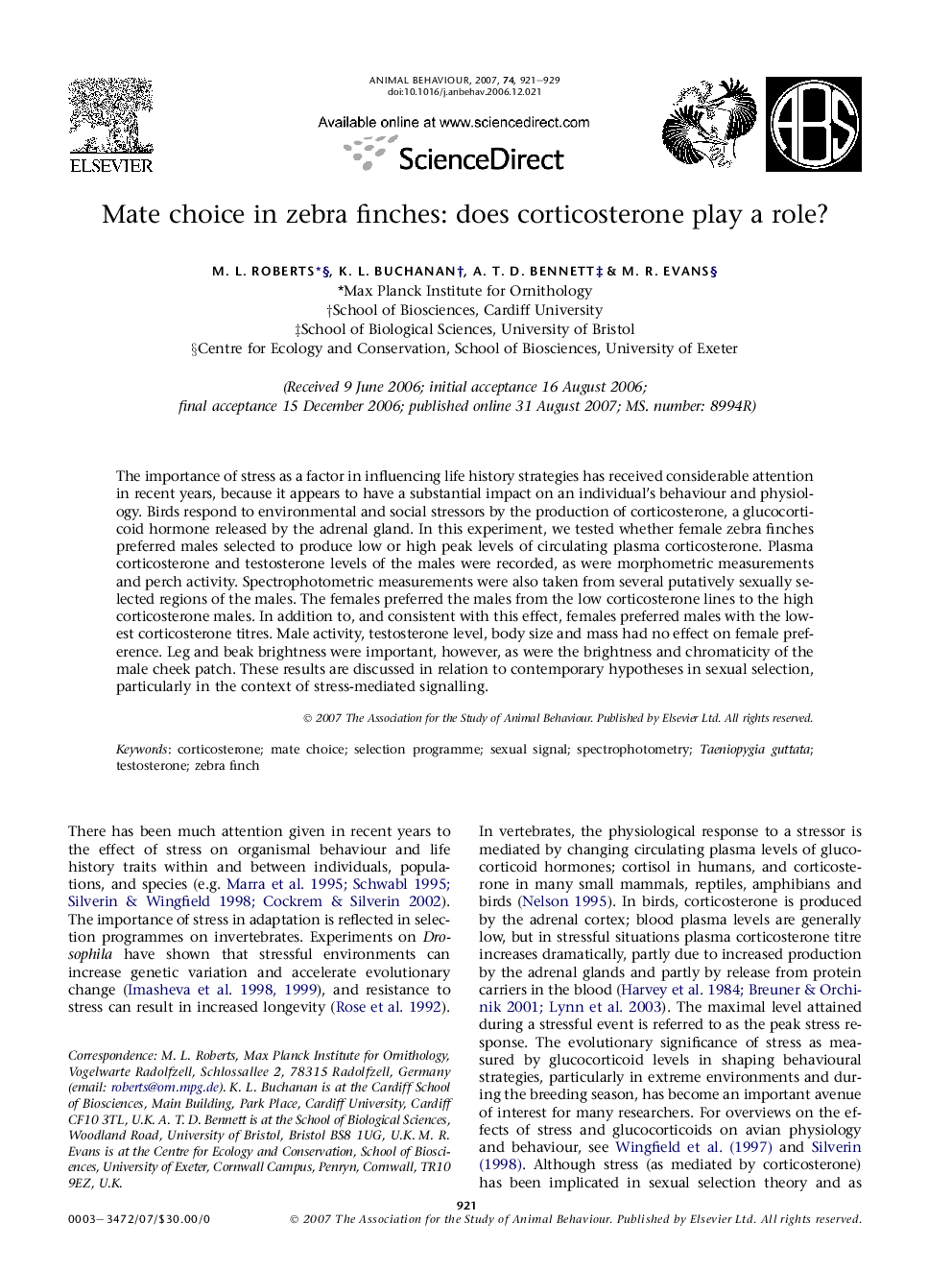| Article ID | Journal | Published Year | Pages | File Type |
|---|---|---|---|---|
| 2418237 | Animal Behaviour | 2007 | 9 Pages |
The importance of stress as a factor in influencing life history strategies has received considerable attention in recent years, because it appears to have a substantial impact on an individual's behaviour and physiology. Birds respond to environmental and social stressors by the production of corticosterone, a glucocorticoid hormone released by the adrenal gland. In this experiment, we tested whether female zebra finches preferred males selected to produce low or high peak levels of circulating plasma corticosterone. Plasma corticosterone and testosterone levels of the males were recorded, as were morphometric measurements and perch activity. Spectrophotometric measurements were also taken from several putatively sexually selected regions of the males. The females preferred the males from the low corticosterone lines to the high corticosterone males. In addition to, and consistent with this effect, females preferred males with the lowest corticosterone titres. Male activity, testosterone level, body size and mass had no effect on female preference. Leg and beak brightness were important, however, as were the brightness and chromaticity of the male cheek patch. These results are discussed in relation to contemporary hypotheses in sexual selection, particularly in the context of stress-mediated signalling.
